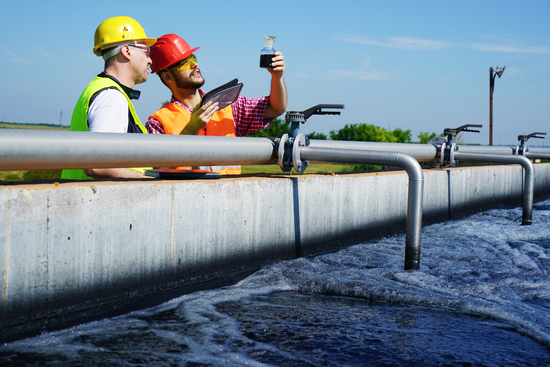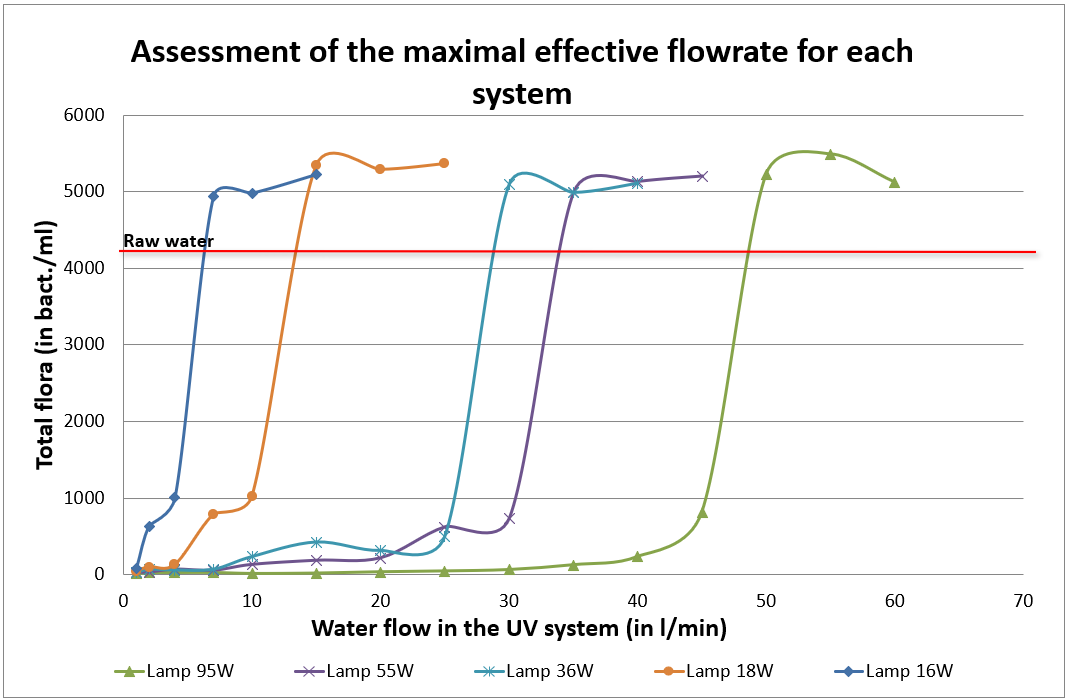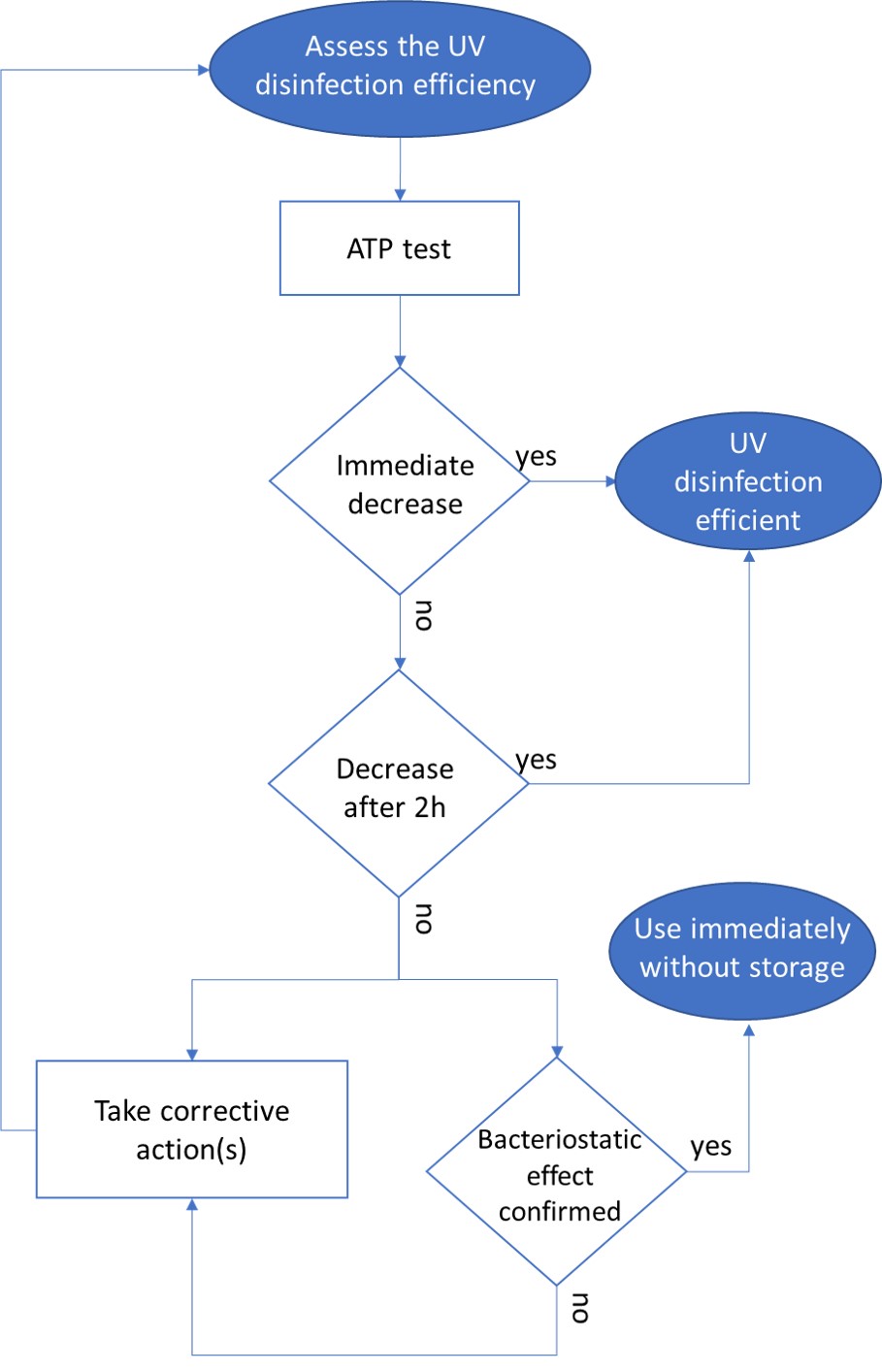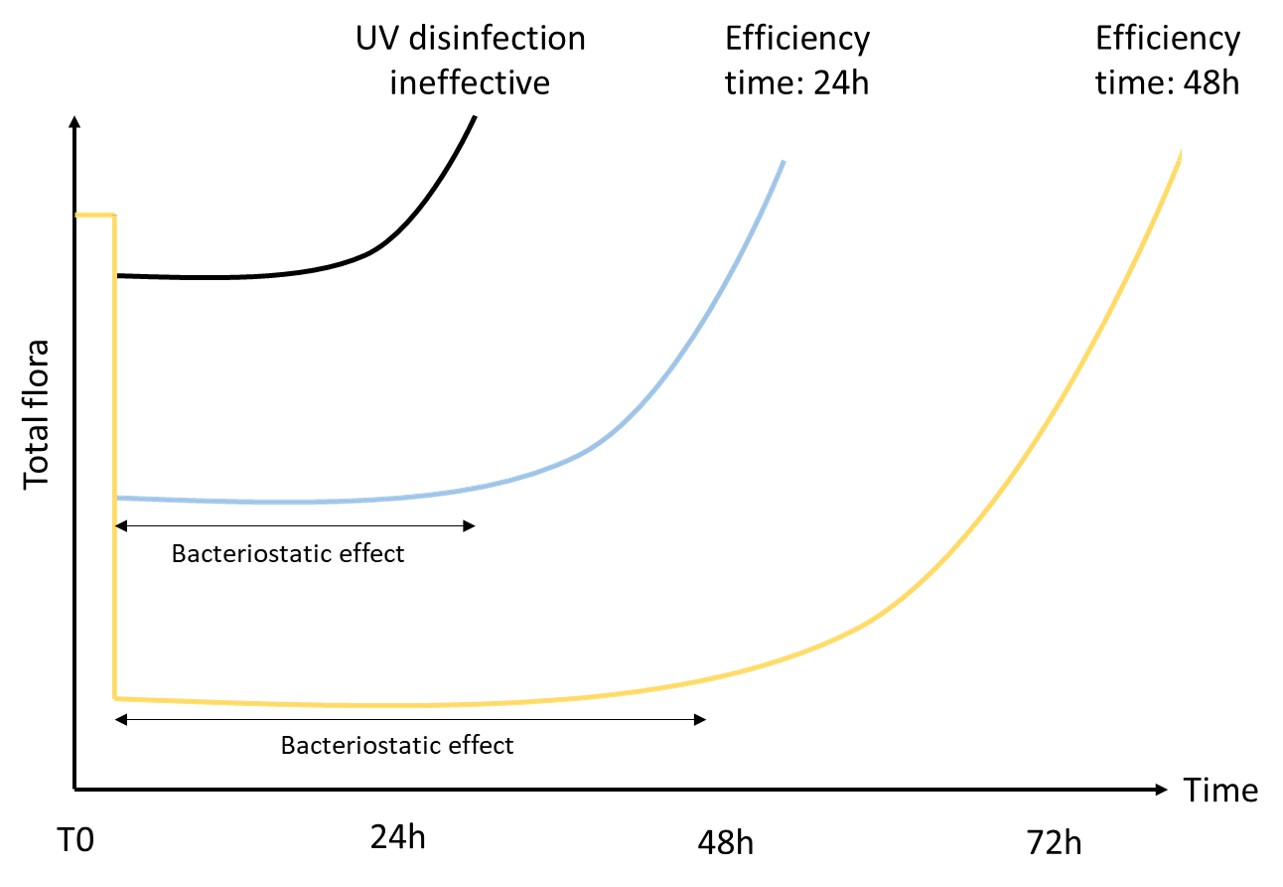UV disinfection
How does it work?
Nowadays, UV disinfection is commonly used for drinking water treatment. UV radiations alter nucleic acids (DNA and RNA) of most cells such as bacteria, viruses or protozoans. They damage the genetic material of microorganisms preventing them from replicating or ensuring part of their metabolic functions. UV radiations inactivate microorganisms.
Depending on the type of microorganism and its physiological state, the inactivation will have:
- a bactericidal effect leading to the death of the cell. Indeed, if the UV dose is high enough, radiations will alter the membrane integrity and lead to the immediate destruction of the cell.
- a bacteriostatic effect which will momentarily stop the growth and development of the cell. However, microorganisms have the ability to repair UV-induced damage and restore infectivity.

UV doses
The UV doses required to permanently inactivate a cell vary from one microorganism to another. The UV dose is the fundamental parameter to properly size a UV system. It corresponds to the product of UV light intensity (irradiance) and exposure time, which directly depends on the water flow.
The graph below shows the effectiveness of different UV systems depending on the water flow. The data are collected 2h after treatment using the ATP tests DENDRIDIAG SW. The graph highlights the effect of the water flow on UV disinfection efficiency.

According to many studies on the subject, the minimal UV dose is 40 mJ/cm² to inactivate all microorganisms. Usually, UV-C are used at a wavelength of 254nm.
However, several parameters have an impact on UV disinfection efficiency:
- water clarity,
- turbidity,
- total suspended solids,
- colour,
- dirtiness of the lamps (scaling, high iron or manganese content in water…),
- water film thickness,
- aging of lamps…
Unlike biocidal treatment such as chlorination, UV radiations have no residual disinfection. If the nucleic acids show little damage, microorganisms have the ability to repair their genetic material and can grow again. This phenomenon is known as reactivation. Therefore, water disinfected by UV light should not be stored, at the risk of further proliferation. UV disinfection is particularly efficient and relevant when used:
- at the point of use,
- in addition with other treatements,
- on clear water poorly contaminated.
UV treatment efficiency assessed by ATP testing
Quantitative ATP tests measure the amount of ATP in microorganisms. It measures the total flora after UV disinfection, there are 3 main scenarios:
- Immediate decrease: the UV system has an immediate bactericidal effect that destroys the cells. The ATP is freed in the water. The membrane filtration step of the ATP test eliminates the free ATP.
- Decrease after a two-hour delay: the UV system efficiently damaged the cells, but did not alter the membrane integrity. Therefore, this time, the filtration step does not eliminate these damaged cells. After 2 hours, the cells will be destroyed and the bactericide effect will be visible by ATP testing.
- No decrease observed 2h after treatment: the UV system has little to no bactericidal effect. It is then important to assess whether the UV system has a bacteriostatic effect. Indeed, the risk of reactivation and regrowth is high. If the bacteriostatic effect is shown, it is then possible to use the treated water quickly, without storage.

How to assess the bacteriostatic effect of the UV disinfection?
Following UV disinfection, sample one litre of water. Using ATP test, measure the sample 2 hours after treatment, then every 24h for 3 to 4 days. This study will show you the biomass evolution in time, such as depicted in the following graph.
Keep in mind that, by culture method, this bacteriostatic effect can be mistaken with a bactericidal effect. Indeed, the inactivation leads to an increase of the latent period and thus to a decrease or absence of colony.
If the UV disinfection is not satisfactory, various options should be considered:
- Increase the lamp intensity,
- Decrease the water flow,
- Check the lamp state and the quartz scaling
- Check the water clarity…

Total biomass evolution after UV disinfection

